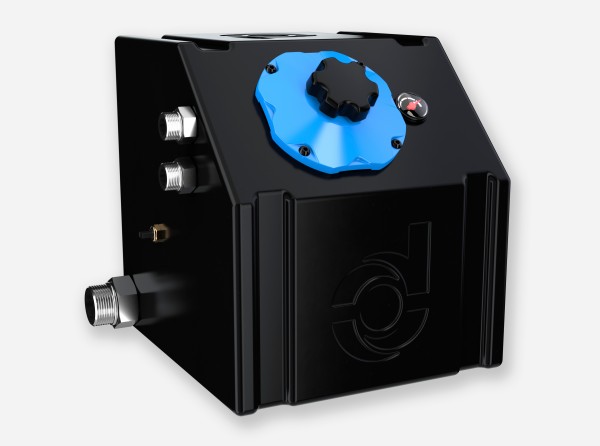To maintain clean and dry hydraulic oil, OEM designers could choose to add a filter to every stage of a hydraulic circuit. However, cost, space and pressure requirements usually necessitate that OEMs only integrate filtration at specific points. To help with these decisions, Donaldson hydraulic filtration experts can work with OEM engineers to develop strategies that support specific system functions and the corresponding cleanliness requirements.
Filters Protect Hydraulic Systems
Typical contaminants found in hydraulic systems are sand/silica, silt, metal, oxides, carbon and even air. Water is another major contaminant that brings with it a unique set of potential problems. Because water is more compressible than oil and has no sealing or lubricating ability, it will negatively affect the performance of a hydraulic system. It also promotes the corrosion of metal surfaces, which degrades performance and can serve as an additional source of contamination.
Where Does Filtration Fit in a Hydraulic Circuit?
Hydraulic oil follows a path through the hydraulic circuit, beginning at the reservoir which feeds the pump (or multiple pumps). From the pump, the flow path can move to multiple circuits throughout a piece of equipment. Potential applications for hydraulic filtration include work equipment, transmission and powertrain, steering and brake, auxiliary or lubrication circuits.
In addition to hydraulic pressure circuits, engineers will often incorporate a lubrication circuit, such as directing flow to a transmission or gearbox. Sometimes these circuits can be combined into the same system, or they can also be separate circuits, depending upon the application.
Single Circuit Filtration Strategies
The following description is an explanation of a single circuit with different filtration strategies, although many hydraulic circuits incorporate divergent flow paths. These filtration strategies can support the contamination removal requirements of various systems.

- First, oil is drawn from the reservoir, where it often goes through a suction strainer to make sure that any large pieces of contamination or debris cannot make it out to critical equipment, where it can do serious damage.
- Next, oil will often go to a low-pressure suction filter, which serves a direct role in protecting the pump. From there the oil, which has been filtered of any damaging particulate matter, passes through the inline pump.
- It is then filtered again in the high-pressure section of the circuit. This second high-pressure filtration is to protect the expensive hydraulic components (e.g., power actuation components) from particulates and debris.
- After doing its work, the hydraulic fluid is typically directed through a medium-pressure return line filter, which removes contaminants generated during component activity.
- Lastly, as oil is returned to the tank, an in-tank filter is often included to remove any contamination acquired before the oil returns to the reservoir. Explore Donaldson's Reservoir Solutions to see how several of these filtration steps – plus enhanced deaeration technologies – can be incorporated into an in-tank system.
- Kidney Loop Filters – Off-line filtration supplements system cleanliness. Use with stationary and mobile equipment to achieve and maintain proper ISO cleanliness levels.
- Breathers, such as T.R.A.P., prevent ongoing ingression of airborne contaminants from entering the reservoir tank.
Oil within a hydraulic reservoir / tank can also be exposed to contamination, so it needs to be protected too. As oil is pumped out of the reservoir to do its job of creating pressure within a hydraulic circuit, it is replaced by ambient air. In order to prevent that air from bringing in external contaminants (dirt and water), breathers are used to capture contaminants and remove water.
For an extra degree of protection and to extend the life of hydraulic oil, occasional system “polishing” (filtering outside of normal operation) with kidney loop or offline filtration is also used for the removal of fine particulates. Donaldson also has an array of hydraulic reservoir accessories to protect equipment and components from damage, enhance system efficiency and provide more effective monitoring.
An effective filtration strategy is the only way to maintain hydraulic fluid cleanliness, which helps ensure equipment performance and reliability. And cleaner hydraulic fluid can result in better equipment uptime, reduced component repair and replacement, reduced maintenance expenses and extended machine longevity -- all things that OEM's and equipment owners will appreciate.





